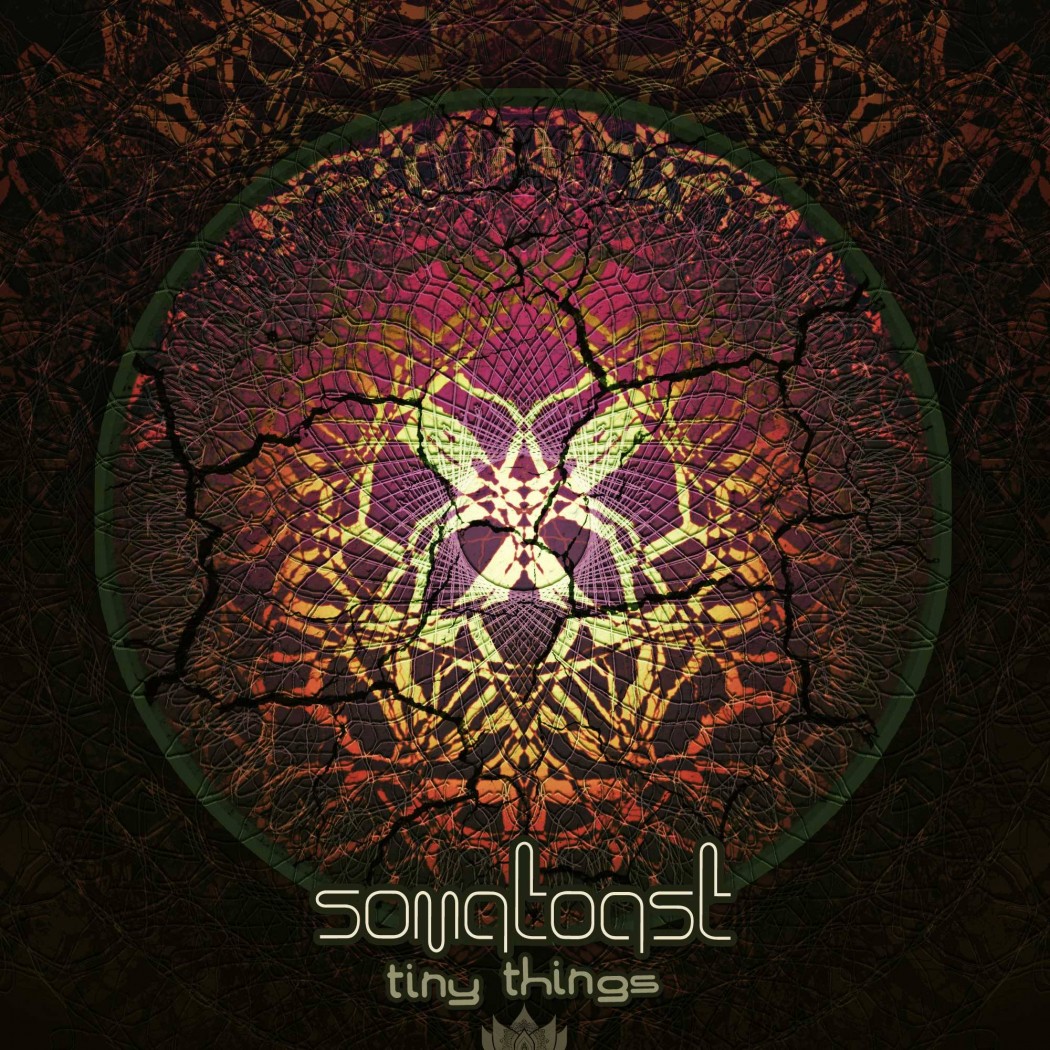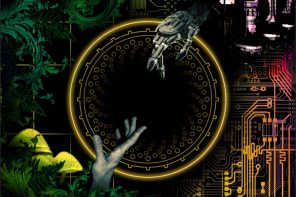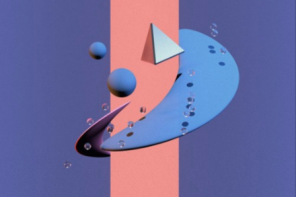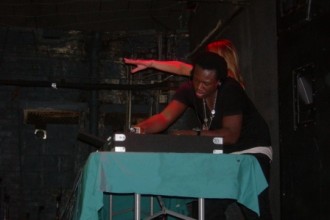[note: this is a republished article, dated December 2014, from the deleted LIS archives.]
Mark Rubin, a film graduate from the University of Texas in Austin, has answered his call to produce his own brand of psychedelic downtempo/midtempo bass music. LIS was fortunate enough to arrange a 1-on-1 in anticipation for his new release, Tiny Things; available December 15th on Shanti Planti. We asked Mark to tell us, in-depth, about his music project; past, present, and future; and show the LIS community one of the tracks from the new release, but first..
To warm this toaster up, we have a video courtesy of Chris Bohl (Austin, TX), who captured the magic of Somatoast from the 2014 edition of Art Outside (TX), featuring the track, ‘Bear Brains’, also on Tiny Things.
Somatoast Art Outside 2014 from The Art of Bohl on Vimeo.
In the emerging movement of “psybass”, you’ve managed to maintain a unique style. What are a few names that influenced your style outside of electronic music?
Mark: I listen to a wide variety of music. In fact, I only started listening to electronic music about five or six years ago. Some of my favorite artists outside of electronic realms include obscure hippie folk music, such as the Incredible String Band, reggae bands like 10 Foot Ganja Plant, John Brown’s Body, and Giant Panda Guerrilla Dub Squad. I like the Dead, Old & In The Way, David Grisman, Jazz, Funk, Jam; I was even big into Thrash and Metal in high school. I’m not exactly sure how it all works into Somatoast, but I like to think I am somehow incorporating everything that I’ve picked up along the way.
The most obvious influence in my music is probably dub and reggae. Before I discovered Ableton or any electronic music, I was recording reggae in my bedroom throughout high school. I tracked each instrument and got to know how they interact to form the sounds and grooves that I love. It was reggae music that made me pick up the bass guitar. Learning to play reggae on the bass created a solid foundation for producing the funky basslines I make today. Reggae music also turned me on to triplet and swinging grooves which make up the heart of a lot of my songs. Also, I would be nowhere without my background in drumming. I took drum lessons from a very young age and expanded to percussion as I got older.
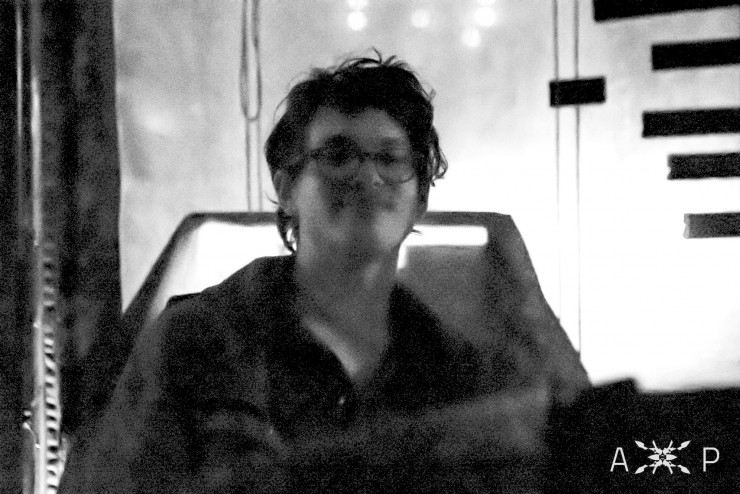
Are there any influences outside of music which have inspired your Somatoast creations?
MR: It’s probably somewhat obvious that psychedelic culture and history has made its way in to my music. I love sampling old Tim Leary recordings. The new EP has recordings of Ken Kesey and Owsley Stanley. I think their influence permeates our electronic music culture today in a way that many are unaware of.
With the Tim Leary recordings came the theme of the Tibetan Book of the Dead in my first EP, Liberation Through Hearing. I chose to do that because I felt that music could be the elixir to trigger the process of death and rebirth described in the book. I feel deeply connected to this process in my creative process and even in my daily inner experience. Tim Leary’s version made the ideas that much more accessible and relatable to the western psychonaut and provided a map for charting the psychedelic experience and, for me, the processes of my own mind. I encourage anyone who is interested to check out the Leary, Alpert, and Metzner “psychedelic english” translation of The Book of the Dead (titled The Psychedelic Experience) as well as the traditional english translation of the text. So, the process and death and rebirth is one story I like to incorporate into my music, partly because I believe the creative process is inherently a process of death and rebirth.
“Story” is itself another influence in my music. I was a film student at UT, and while I don’t really consider myself a filmmaker, my education has certainly influenced me to be a storyteller. I think telling stories through music takes skill and it’s something I try to work at with every song.
Now that you’ve graduated from the film program at the University of Texas, what are your plans for cross integration of video and audio?
MR: I’m not entirely sure. I like to think I’m just kind of floating wherever my network takes me, as most of these things are a “who you know” type thing. I’ve dabbled in film and video game scores, which I’d like to do more of, although scores aren’t, yet, my expertise. When I feel less hopeful about making a career out of the Somatoast project, I look for “normal” audio and video related jobs, then say “fuck it” and start making more music. I’m totally open to working on more films, games, scores, sound effects, anything that should come my way. I also do quite well in the subject of video editing, but I prefer to exert my energy making the music.
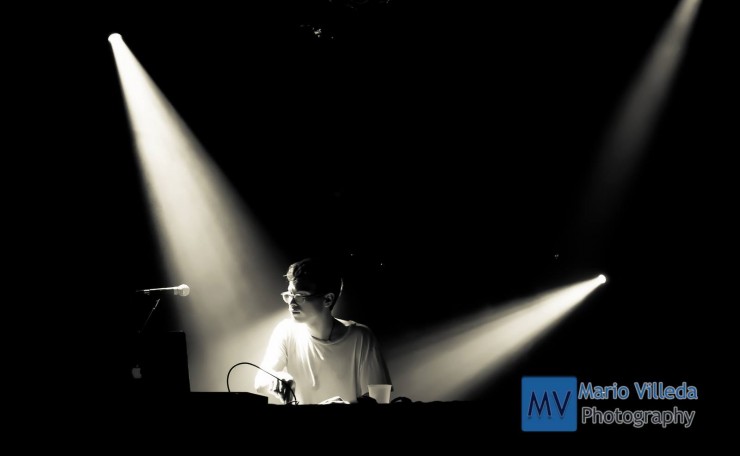
Sound Design has become a prevalent aspect to the progression of electronic music. Who are the sound designers that influenced you into adding the element? What is the typical process for integrating Sound Design into the Somatoast project?
MR: Well I’m quite young and inexperienced, so really I’ve grown with the trends. My main influences when it comes to sound design is everyone you would probably expect in our scene currently: Tipper, Kalya, Hedflux, Quanta/Akasha— my sound has formed while simultaneously becoming acquainted with such music over the last four or five years.
I will say, it can be a trap to become attached to an artist’s sound design and attempt to copy it. Certainly those artists inspired me to create unique, eclectic sounds, but it can be drudgery if I try too hard to copy a sound or style. We’ve all gotten hooked on trying to make music that bangs as hard as Tipper, but to actually breakthrough and make a good track, it’s important to take what you know and make something for yourself, using the tools you know best, and to let go of all desires to be like this or be like that.
I might be inspired and hear something great in my head. Often times I’m influenced by another song and I hear a rhythm I want to try and recreate. It can be a great starting point, but it becomes a trap when I become so attached to whatever I’m hearing in my head rather than letting go and simply going with the flow of what is being created on the canvas and what sounds are actually there. Without sounding cliché, it’s about being “here and now.” I can get so caught up in what I’m hearing in my head and want to hear it come out of the speakers so badly that I can forget to hear what is actually being created. The attachment to what I hear in my head causes me to fail at building off of what is actually there and turning it into a good track, thus hitting a brick wall. To be so caught up in what you want to hear rather than what you’re actually hearing will leave you dissatisfied to no end. This is where “death” comes in—the mind must be silenced to fully hear what is being created. To me, it’s the same difference between living in your thoughts and being controlled by them rather than living in the moment and seeing the true reality of things.
How do I (try to) avoid this ego trap when I make music? Play!
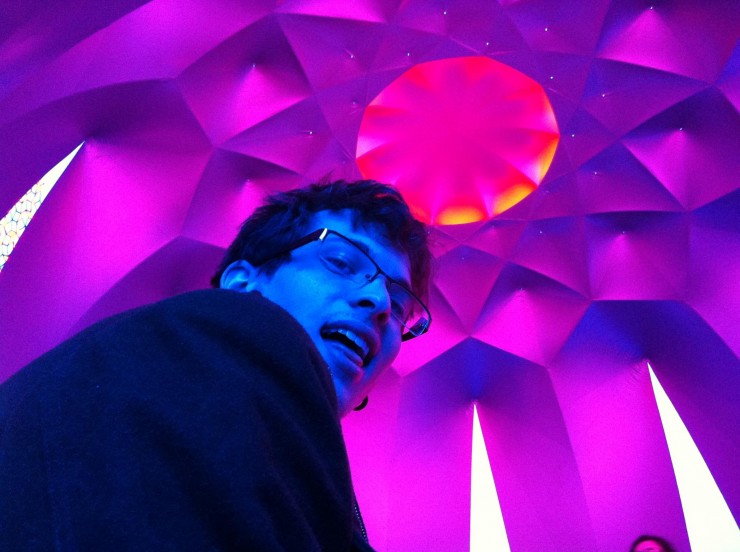
I tell people this all of the time: the most important thing you can do is play. I am speaking of true, innocent play time. Press buttons, twist knobs, load in random samples and stretch and filter and pitch the shit out of them. Don’t even think about it, just play with anything you can get your hands on.
After I’ve had some good, innocent play time, I am bound to “accidentally” create an interesting noise that gets the juices flowing. I may hear a rhythm in it and build off of that, then I hear the perfect beat within the natural rhythm of some random noise and the rest comes together almost effortlessly (on a good day).
So yeah, that’s the death: you’re so immersed in it, and there’s nothing telling you to make this or that. The rebirth is after you’ve had a session of play time, you come back to your senses and your logical mind starts to kick in again and allows you to put together the structure and the story of the song. In that void of emptiness while twisting knobs and clicking on random shit, you’ve magically learned something new, such as your favorite new effect or combination thereof. Before you know it, you’ve got a whole series of your own unique techniques that you’ve discovered; just like when we sit down to meditate or go on a psychedelic journey, we’re leaving our normal senses and somehow return with new knowledge from the void. That’s the death and rebirth, and for me, creating a successful track requires just that.

You mentioned influence from the psychedelic culture. In what ways do you go about recreating the psychedelic experience?
MR: Well, like I mentioned above, I feel creating music is a psychedelic experience itself. As for the way other people experience what I’ve created, I hope that by listening and dancing to my music, they experience a death and rebirth of their own. I hope that they can be liberated from their own internal chatter, even for a brief moment. As they listen or dance and exist in that empty space, I hope that they can return with their own knowledge that will help them expand as a person, or an artist, or whatever they want to be, in the same way that was required of me in order to create what is being heard. This is the meaning of Somatoast. Just as the ancient Soma was, as Ram Dass put it, “the elixir… the drink that transmutes,” I hope that the music will be transmuted into others’ own experiences that are helpful or inspirational to themselves. I imagine a lot of musicians feel similarly in regards to the purpose of their music, even if the experience they want to convey is simple amusement.
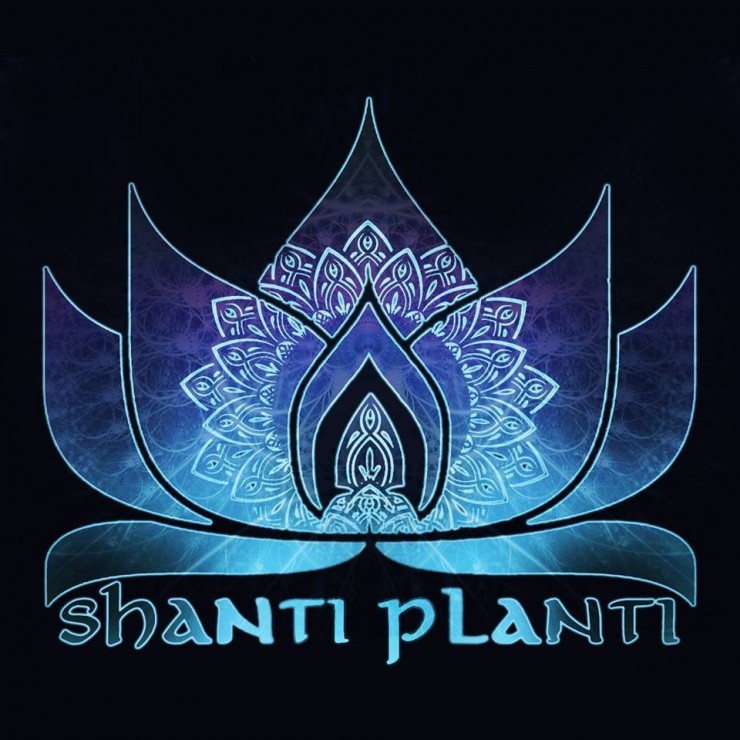
The label you’re on, Shanti Planti, has redesigned the model of a music label. It features a juggernaut of unique downtempo forms in psychedelic music with everyone from Whitebear to Quanta. You were there from the start. Could you tell us a bit about the infrastructure, and how exactly it differs from any other record label?
MR: The idea behind Shanti Planti was to create an entity that offers the support, promotion and accessibility that any label provides while allowing the artist to maintain full creative control and financial benefits from their own work. Between our shared networks, we can share and promote each other’s music without relying on, or being subject to, the control of a label or label head. With bandcamp as our primary distribution platform, the artist can sell their music directly through their personal bandcamp.
What really drew me to Shanti Planti is the cooperative and collaborative structure of the label. As the collective grows and morphs, decisions are discussed and voted on by the members. We have established a collective bank account that is used for collective purposes such as funding compilations, stickers, or distribution for the label. There has also been talk about taking up the task of booking through the label. I’ve experienced the ways that cooperative businesses and housing can improve a community, so I was very excited to jump on board with Shanti Planti to help bring that ethos to the music industry and start imagining an alternative way of doing things. While still in the early stages of development, we are learning and growing and I am hopeful of the future.
It’s been about 18 months since your last release, Withinity. What has been your inspirations/concepts for the cultivation of Tiny Things?
MR: Well, the oldest song in Tiny Things was actually only created this past May. The EP is the result of my summer efforts. I spent the year between the release of Withinity and the beginnings of Tiny Things making tons of unfinished tunes. I may or may go back and release some of those unfinished tunes, but I mostly feel that they were created simply for practice and expanding my skills and techniques.
I first felt that I had a solid vision for a new EP in May when I created the first track on the release. I had been experimenting with bent and pitched strings and became influenced by the off kilter/broken feeling that they invoked. I also knew that I wanted to focus on creating more uptempo music, around 90 BPM in this case, because I’ve created so much dub and downtempo between 70 and 80 BPM (I have also been creating more in the realms between 100 and 110 which I hope will form my next release). Shortly thereafter, I created the second track of the EP and really went off the deep end with the broken sound. It was after creating track 2 that I knew exactly the direction I wanted to take the release. I then spent my summer in an unfavorable situation in Los Angeles which I hated, to say the least. So, as an escape from work and school, I spent all of my free time creating music, which flowed surprisingly more easily than it had in awhile. I like to think of the sound of the EP as representing the dysfunctional and doomed nature of humanity in the context of big cities like LA, even though I came up with the “broken” concept before my arrival there. Nonetheless, I came to describe the music as garbage, trashy, broken, twisted— all things I also relate to that city. I also called track two “Stepping On Cracks” because of all of the cement I was surrounded by and because I found an interview with Ken Kesey in which he speaks of the “crack in your mind”. I felt like it all fit together. I was going to call the EP “Stepping on Cracks” as well, and even created an album cover for that name, but decided against it due to the sayings’ connotation with bad luck and breaking your mother’s back. Fast forward three months: I had finished my favorite selection of tracks from the summer and had a jar full of “tiny things” such as sea glass, rocks and pinecones that I had picked up along the way. The name is more for my own nostalgia than having much to do with the music, but I feel like it sums up the process nicely.
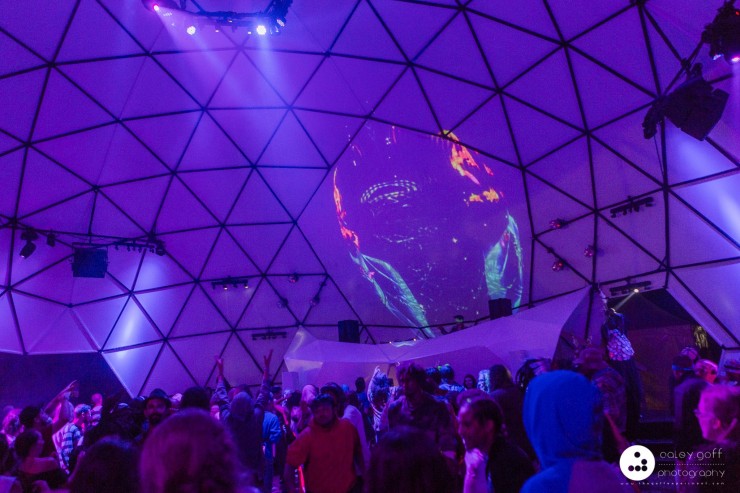
2014 Art Outside (Texas)
Now that Tiny Things is finally ready to be released into the collective, what’s the next step for Somatoast?
MR: I’d really like to focus on creating a full length album and bringing my music to new places. I had been trying to get through school the last few years, so now I can devote my full attention to creating and sharing music! I’m sitting on a few stems to remix from Mumukshu, Bogtrotter, and Subaqueous. I’d also like to get some remixes done of tracks from Tiny Things, with one already one the way from Drrtywulvs.
LIS: It’s been an honor to watch you develop over the years, brother. Thank you dearly for taking the time to shed a bit of your soul for us!
MR: Thank you Phillip for all the support and opportunities you’ve provided with me with over the last few years, and thank you Lost In Sound for this awesome feature! Thank you to anyone reading, listening, dancing, and sharing!
On behalf of LIS, it’s our pleasure to share the world premier of “Microportal”, the intro track from Tiny Things, Somatoast’s new EP, out on Shanti Planti, December 15th:

